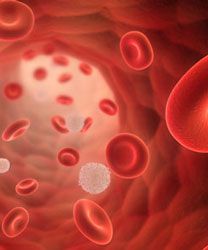- Advertise
- About OncLive
- Editorial Board
- MJH Life Sciences brands
- Contact Us
- Privacy
- Terms & Conditions
- Do Not Sell My Information
2 Clarke Drive
Suite 100
Cranbury, NJ 08512
© 2025 MJH Life Sciences™ and OncLive - Clinical Oncology News, Cancer Expert Insights. All rights reserved.
Cellular Immunotherapy Expert Explains CAR T-Cell Therapy Excitement
Marcela V. Maus, MD, PhD, evaluates the next generation of chimeric antigen receptor (CAR) T cells in both hematologic malignancies and solid tumors

Marcela V. Maus, MD, PhD, is an expert in the field of cellular immunotherapy, serving as director of research activities in cellular immunotherapy at Massachusetts General Hospital and an assistant professor of medicine at Harvard Medical School.
How do the various CAR T-cell therapies in clinical development differ in their mechanism of action and targets?
How is CAR T-cell therapy shaping the treatment of hematologic malignancies?
What are the inherent challenges in developing this type of therapy for solid tumors?
What are the implications of the recent FDA approval of tisagenlecleucel?
The work in her own lab seeks to design and evaluate the next generation of chimeric antigen receptor (CAR) T cells in both hematologic malignancies and solid tumors, with the goal of improving safety and efficacy, in addition to understanding how CAR T cells might be used as delivery vehicles for other drugs.There are 4 basic parts to a CAR T-cell therapy: the type of T cell used (CD4/CD8/other subsets), the vector used to introduce the genes that encode the CAR, the genes that encode the CAR itself, and the culture system used to grow the T-cell product. Each of these can differ in each product, but most think about what the CAR itself will target. The CAR T cells that are closest to commercialization, and the 2 that were recently approved, all target the B-cell marker CD19. There are many other CAR targets in development, as well, and promising data have been presented with CAR T cells targeting the B-cell maturation antigen, a marker that is frequently present in multiple myeloma. CAR T cells are a revolutionary form of personalized therapy for hematologic malignancies; they have a completely different mechanism of action from chemotherapy or radiation therapy, and they are different from small molecule drugs. Although at first they will be approved in the relapsed or refractory setting, there is potential for this kind of therapy to move up to earlier lines of treatment. Solid tumors seem to be more challenging for CAR T cells because we don’t have as well-defined targets to direct the CARs to and because they have a robust inhibitory microenvironment that can turn CAR T cells off. However, I think both of these are potential avenues of research to develop effective CAR T cells for solid tumors.The new approval means that patients will no longer have to wait for the availability of a slot on a protocol, and they won’t technically be participating in an experimental approach. It will be prescribed by their doctor, although there are still limitations on which doctors and hospitals will have the therapy available, and it will still involve coordination to make the cell products.
How are gene-editing technologies playing a role in the development of CAR T-cell therapy?
Also, now instead of being paid for by the company (Novartis, in this case), it will be paid for by the patient’s insurance. The cost of the treatment seems high when you look at it in isolation, but given the complexity of manufacturing an autologous product for each individual patient, and the value that it brings, it is less than some were expecting. It is also interesting that Novartis has agreed to a model where they will be paid only if the patient has a response and will assume the risk and cost if the patient does not respond. Gene-editing technology offers new and intriguing possibilities for next-generation CAR T cells: Some companies are developing “off the shelf” CAR T cells, so that one batch of cell products stored in the freezer could be used on demand to treat any patient in need. Others are also developing souped-up T cells that can have the CAR genes integrated into specific genes in the host chromosome or that knock out some of the checkpoint molecules that can turn off T cells. We are in exciting times in this research, and hopefully more and more patients will benefit from these advances in cellular immunotherapy.
Related Content:




